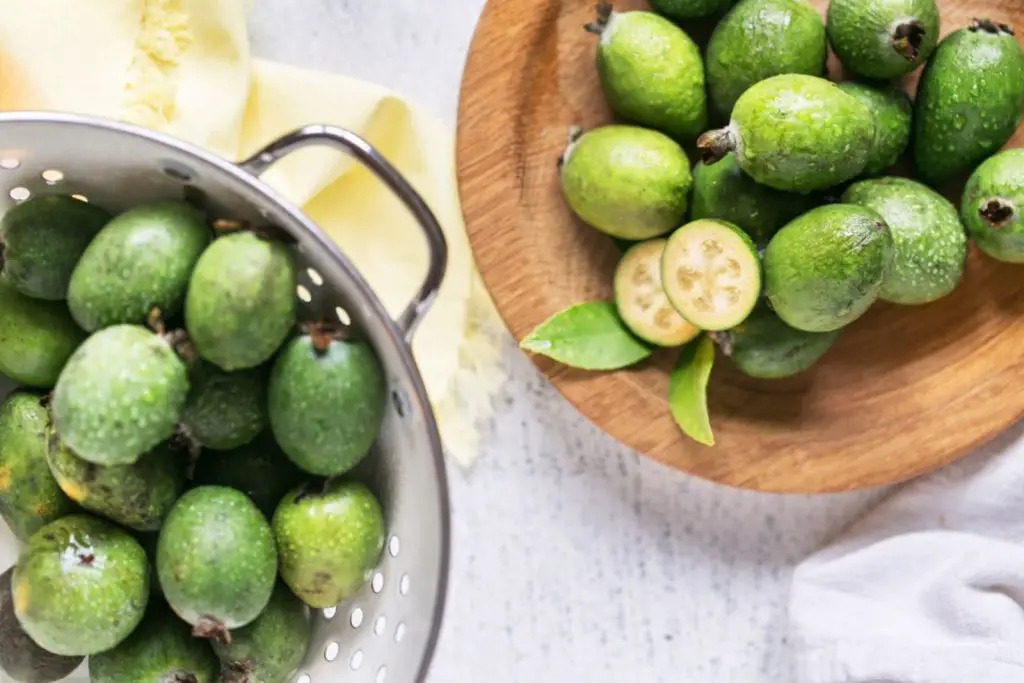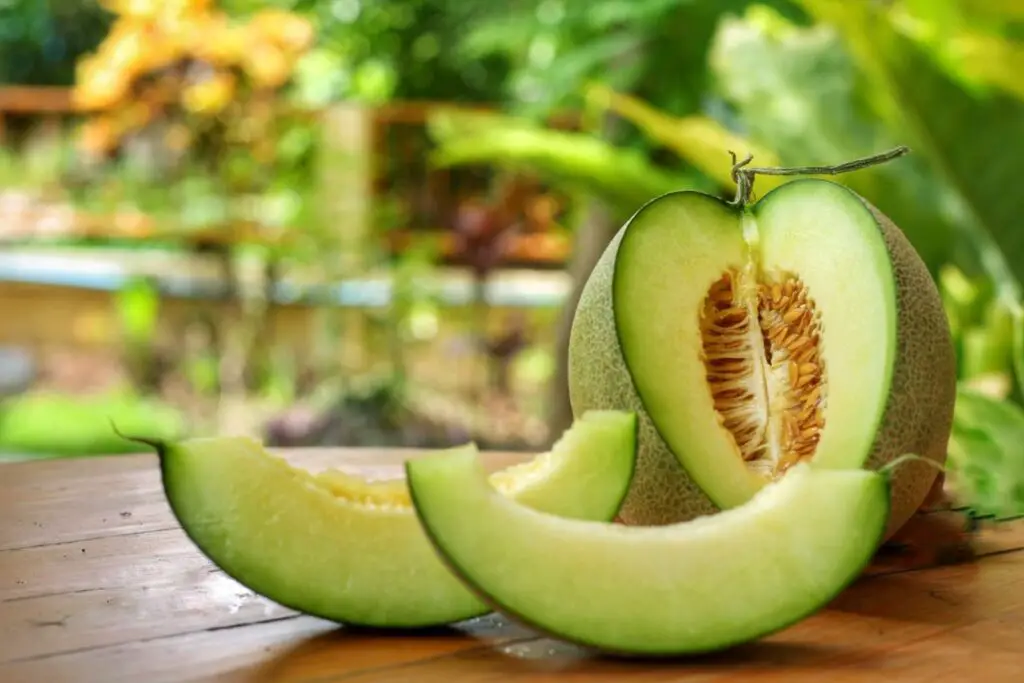
Dewberries are small, juicy berries that resemble blackberries and are known for their sweet and tangy flavor. These berries are often enjoyed fresh during their short growing season. However, if you have an abundance of dewberries and want to enjoy them throughout the year, freezing is a great option. Freezing dewberries preserves their freshness and allows you to savor their delicious taste even when they are out of season. In this article, we will provide a step-by-step guide on how to freeze dewberries while maintaining their texture and flavor.
Follow these steps to freeze dewberries:
Step 1: Choose ripe and fresh dewberries
When freezing dewberries, it’s crucial to start with ripe and fresh berries. By selecting dewberries that are fully ripened, you ensure that you capture their optimal flavor and sweetness during the freezing process. Ripe dewberries have reached their peak maturity and offer a delightful balance of tartness and sweetness.
Ripe dewberries are also firmer in texture, which makes them more resistant to damage during the freezing and thawing process. They hold their shape better and retain their juiciness, resulting in a more enjoyable eating experience once thawed.
Additionally, it’s important to inspect the dewberries and avoid any that show signs of blemishes or mold. These imperfections can affect the overall quality and taste of the berries, even after freezing. By choosing dewberries that are free from blemishes, you ensure that you freeze only the best berries, enhancing their flavor and preserving their visual appeal.
Remember to handle the dewberries gently when selecting them to prevent bruising or squashing. Properly chosen ripe and fresh dewberries will yield the best results when frozen, allowing you to enjoy their vibrant flavors and delightful juiciness even when they are out of season.
Should I freeze the dewberries whole or should I slice them?
Whether to freeze dewberries whole or sliced depends on your preference and how you plan to use them. If you intend to use the dewberries in their whole form, freezing them as such would be ideal to preserve their shape and texture. On the other hand, if you envision using the dewberries in smoothies, sauces, or baked goods where smaller pieces are desirable, slicing them before freezing can save you time when incorporating them into recipes. Consider the intended usage and choose the freezing method that aligns with your culinary plans.
Step 2: Wash and prepare the dewberries
To ensure that your dewberries are clean and free from any dirt or debris, it’s essential to wash and prepare them before freezing. Follow these steps to properly wash and handle the dewberries:
- Gently wash under cool running water: Place the dewberries in a colander or strainer and rinse them under cool running water. Move them around with your fingers to ensure that all surfaces of the berries are thoroughly rinsed. The cool water helps remove any dirt, dust, or residues that may be present on the berries.
- Be delicate when handling: Dewberries are delicate fruits, and excessive force or pressure can cause them to bruise or become damaged. Handle the berries gently while washing to avoid squashing or crushing them.
- Pat dry with a clean towel or paper towels: After washing, gently pat the dewberries dry with a clean kitchen towel or paper towels. This step removes any excess moisture from the berries, preventing them from becoming excessively wet during freezing.
Remember, it’s crucial to handle the dewberries delicately throughout the washing and drying process to avoid any unnecessary damage. Properly cleaned and dried dewberries will maintain their integrity and quality when frozen, allowing you to enjoy them at their best when thawed.
Can I freeze dewberries without washing them first?
It is generally recommended to wash dewberries before freezing them. Washing removes any dirt, debris, or pesticides that may be present on the berries. Freezing unwashed dewberries may result in freezing these contaminants along with the berries, affecting their safety and quality. Therefore, it is best to wash dewberries thoroughly and allow them to dry before freezing to ensure a clean and safe product.
How do I remove the stems from dewberries before freezing?
To remove the stems from dewberries before freezing, you can follow these steps. Firstly, gently hold the dewberry between your thumb and forefinger. With a small pair of kitchen scissors or a sharp knife, carefully cut or snip off the stem at the base of the berry. Be cautious not to remove too much of the fruit along with the stem. Repeat this process for each dewberry, and once the stems are removed, you can proceed with washing and freezing the berries.
Step 3: Spread the dewberries on a baking sheet
Arranging the prepared dewberries in a single layer on a baking sheet lined with parchment paper is an important step in the freezing process. Here’s why it is necessary:
- Prevents sticking together: Dewberries tend to have a slightly sticky surface, especially when they release their natural juices. Placing them in a single layer on a baking sheet ensures that they don’t come into contact with each other during the freezing process. This prevents the berries from sticking together into a clump, making it easier to remove individual berries when you need them later.
- Facilitates even freezing: When the dewberries are spread out in a single layer, there is more surface area exposed to the cold air in the freezer. This allows for faster and more even freezing of the berries. If they were piled up or crowded together, the berries in the center would freeze more slowly, resulting in uneven freezing and potential loss of quality.
- Maintains individual shape and texture: By arranging the dewberries in a single layer, you help preserve their individual shape and texture. If the berries were stacked on top of each other, they could become squished or misshapen during freezing, compromising their visual appeal and texture.
The use of parchment paper on the baking sheet prevents the dewberries from sticking to the surface and makes it easier to remove them once frozen. It also helps maintain cleanliness and prevents any potential transfer of flavors or odors from the baking sheet to the berries.
Step 4: Flash-freeze the dewberries
Flash-freezing is a technique used to quickly freeze food items, such as dewberries, to maintain their individual shape, texture, and quality. Here’s why flash-freezing is important when freezing dewberries:
- Preserves texture and juiciness: When dewberries are exposed to prolonged freezing at a slow rate, ice crystals have more time to form inside the berries. This can lead to cell damage and result in a loss of texture and juiciness once thawed. Flash-freezing, on the other hand, minimizes the formation of large ice crystals, helping to preserve the integrity of the dewberries’ cell structure. This ensures that the berries retain their texture and juiciness when thawed.
- Prevents clumping: Flash-freezing the dewberries individually on a baking sheet prevents them from sticking together. It allows each berry to freeze separately before they are transferred to a storage container. This ensures that you can easily take out the desired amount of frozen berries without having to thaw the entire batch.
- Maintains flavor: Quick freezing helps to lock in the natural flavors of the dewberries. It preserves their fresh taste and minimizes the potential for flavor loss during the freezing process.
To flash-freeze the dewberries, simply place the baking sheet with the arranged berries in the freezer for about 1 to 2 hours. The exact freezing time may vary depending on your freezer’s temperature and the size of the berries. Once the dewberries are frozen, they can be transferred to a freezer-safe bag or container for long-term storage.
Can I directly freeze dewberries without flash-freezing them?
Yes, you can directly freeze dewberries without the need for flash-freezing. Flash-freezing is a technique used to individually freeze items quickly, preventing them from sticking together. However, for dewberries, since they are small and typically freeze without significant clumping, you can place them in a single layer on a baking sheet or plate, and once they are frozen solid, transfer them to a freezer-safe container or bag. This method works well for dewberries without the added step of flash-freezing.
Step 5: Transfer the dewberries to freezer bags or containers
After flash-freezing the dewberries to preserve their individual shape and texture, it’s important to transfer them into appropriate freezer-safe bags or containers. Here’s why this step is crucial and how to do it properly:
- Prevents freezer burn: Freezer burn occurs when moisture evaporates from the surface of frozen food and causes dehydration. This can lead to a loss of flavor, texture, and overall quality. By transferring the dewberries into airtight freezer bags or containers, you create a barrier that helps prevent the entry of air and moisture, reducing the risk of freezer burn.
- Maintains freshness: Airtight packaging is essential to maintain the freshness of the dewberries. It prevents the absorption of odors from other foods in the freezer, preserving the natural flavor of the berries. Additionally, it protects the berries from potential contamination, ensuring they remain safe to consume.
- Minimizes storage space: Transferring the dewberries into compact freezer bags or containers allows for efficient use of freezer space. By removing excess air from the packaging, you reduce bulkiness and make better use of the available freezer area.
To transfer the dewberries to freezer bags or containers:
- Use freezer-safe bags or airtight containers specifically designed for freezing food.
- Remove the baking sheet with the flash-frozen dewberries from the freezer.
- Quickly and carefully transfer the berries from the baking sheet into the bags or containers.
- Leave some headspace in the bag or container to accommodate any expansion that may occur during freezing.
- Gently press on the bag or container to remove excess air before sealing it tightly.
What type of container should I use to freeze dewberries?
When freezing dewberries, it is recommended to use airtight containers or freezer-safe bags. Choose containers that are specifically designed for freezer storage to prevent freezer burn and maintain the quality of the berries. Alternatively, you can also use rigid freezer-safe containers or jars with tight-fitting lids to protect the dewberries from moisture and air exposure. Label the containers with the date to keep track of their freshness.
Step 6: Label and date the packages
Labeling and dating the packages containing the frozen dewberries is a crucial step in freezer organization and food management. Here’s why it is important and how it helps:
- Easy identification: By clearly labeling the packages with the contents, you can easily identify them without the need to open and inspect each bag or container. This is especially useful when you have multiple types of frozen fruits or berries in your freezer. It saves time and prevents confusion when retrieving the desired item.
- Prevents waste: Adding the date of freezing to the label helps you keep track of the storage time of the dewberries. It allows you to prioritize the use of the oldest packages first. By knowing when the berries were frozen, you can ensure that they are consumed within a reasonable timeframe for the best quality and taste. This reduces the likelihood of food waste, as you can plan your meals or recipes accordingly.
- Maintains freshness and quality: Frozen foods, including dewberries, can lose quality over time. By dating the packages, you can easily monitor how long the berries have been in the freezer. This knowledge enables you to use them before they start to deteriorate in flavor, texture, or nutritional value.
To label and date the packages:
- Use a marker specifically designed for freezer or food storage, or use adhesive labels.
- Write the contents (e.g., “Frozen Dewberries”) on the label or directly on the bag/container.
- Write the date of freezing, including the month, day, and year. For example, “Frozen on MM/DD/DDDD”.
Place the labels in a visible and easily accessible area of the package.
Step 7: Store in the freezer
After properly labeling and dating the packages of dewberries, it’s time to store them in the freezer. The way you store the packages can significantly impact the quality and longevity of the frozen dewberries. Here’s why proper freezer storage is important and how to do it effectively:
- Maintains optimal temperature: The coldest part of your freezer, usually the back or bottom shelf, is the ideal location to store the dewberry packages. It ensures a consistent and uniform temperature, which is crucial for maintaining the best quality of the frozen berries. The temperature in your freezer should be set at or below 0°F (-18°C) to preserve the texture, flavor, and nutritional value of the dewberries.
- Minimizes temperature fluctuations: Temperature fluctuations can occur when the freezer door is frequently opened or due to changes in external conditions. Storing the dewberries in the coldest part of the freezer helps minimize temperature fluctuations, reducing the risk of thawing and refreezing. This helps to maintain the berries’ quality and prevent the formation of ice crystals, which can negatively affect their texture.
- Prevents cross-contamination: Proper freezer storage helps prevent cross-contamination between different foods. Make sure the dewberry packages are securely sealed to avoid any potential contact with other items in the freezer. This helps preserve the integrity of the dewberries’ flavor and prevents the transfer of odors between different foods.
- Maximizes shelf life: Storing the dewberries at the correct temperature and in the optimal location helps maximize their shelf life. The colder the storage temperature, the longer the dewberries will maintain their quality. By following proper freezer storage guidelines, you can enjoy the frozen dewberries for an extended period.
When storing the dewberry packages in the freezer:
- Place them in the coldest part of the freezer, such as the back or bottom shelf.
- Avoid overcrowding the freezer to allow proper air circulation and maintain a consistent temperature.
- Ensure that the packages are sealed tightly to prevent air and moisture from entering.
- Arrange the packages in an organized manner, keeping similar items together for easy access.
How long can I freeze dewberries in the freezer?
Dewberries can be frozen and stored in the freezer for up to 6 to 12 months. However, it is important to note that the longer they are frozen, the more their quality may deteriorate. For optimal taste and texture, it is recommended to consume the frozen dewberries within the first few months of freezing. Proper packaging in airtight containers or freezer bags, and maintaining a constant freezing temperature, can help preserve their quality for the longest possible duration.
Other related questions
How do I properly defrost dewberries?
To properly defrost dewberries, it is recommended to transfer them from the freezer to the refrigerator. Place the frozen dewberries in a shallow bowl or container and allow them to thaw slowly in the fridge for several hours or overnight. This gradual thawing process helps to preserve the texture and flavor of the dewberries. Once thawed, you can use them in your desired recipes or enjoy them as a topping or snack. Avoid thawing dewberries at room temperature or using methods like microwaving, as they may lead to a loss of quality and texture.
Can I refreeze previously thawed dewberries?
It is generally not recommended to refreeze previously thawed dewberries. When dewberries are thawed, ice crystals form and disrupt the cell structure, leading to potential loss of texture and quality. Additionally, each thawing and refreezing cycle increases the risk of bacterial growth and spoilage. To ensure the best quality, it is advisable to thaw only the amount of dewberries needed for immediate use and consume them promptly.
How do I know if my frozen dewberries have gone bad?
When checking if frozen dewberries have gone bad, there are a few signs to look out for. Firstly, visually inspect the berries for any signs of discoloration, mold growth, or an off-putting appearance. If they appear mushy, have a strange odor, or show signs of freezer burn (dry, discolored patches), they may have deteriorated. Additionally, if the taste or texture seems significantly different from when they were frozen, it’s an indication that the dewberries have spoiled. When in doubt, it’s best to err on the side of caution and discard any frozen dewberries that raise concerns about their safety or quality.
Can I use frozen dewberries with the fresh ones?
Yes, you can use frozen dewberries alongside fresh ones in certain recipes. However, it’s important to keep in mind that frozen dewberries will likely be softer and may release more juice when thawed. This can affect the overall texture and moisture content of the dish. If you’re incorporating both fresh and frozen dewberries, you may want to adjust the recipe accordingly to account for the potential differences in texture and moisture. Experimentation and taste testing can help you achieve the desired balance between fresh and frozen dewberries in your recipe.
Can I freeze dewberries with sugar to preserve their flavor?
Yes, you can freeze dewberries with sugar to help preserve their flavor. Sugar acts as a natural preservative and can help maintain the sweetness of the berries. To freeze dewberries with sugar, simply toss them in a bowl with the desired amount of sugar and let them sit for a few minutes to allow the sugar to dissolve. Then, transfer the sweetened dewberries to a freezer-safe container or bag and freeze them as usual.








